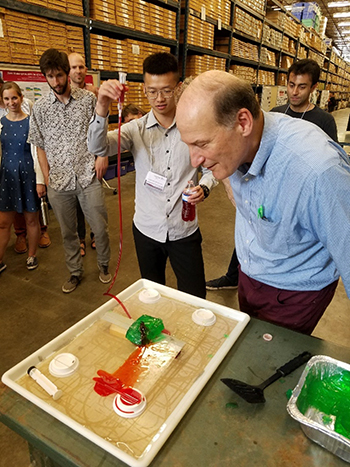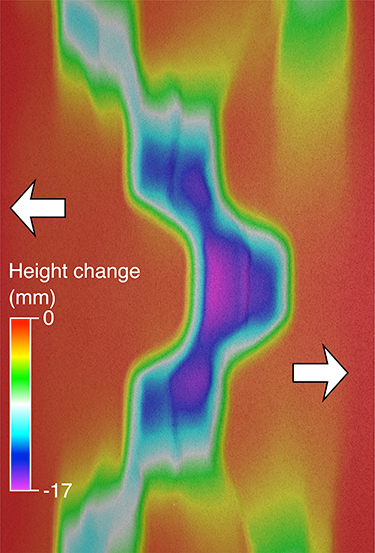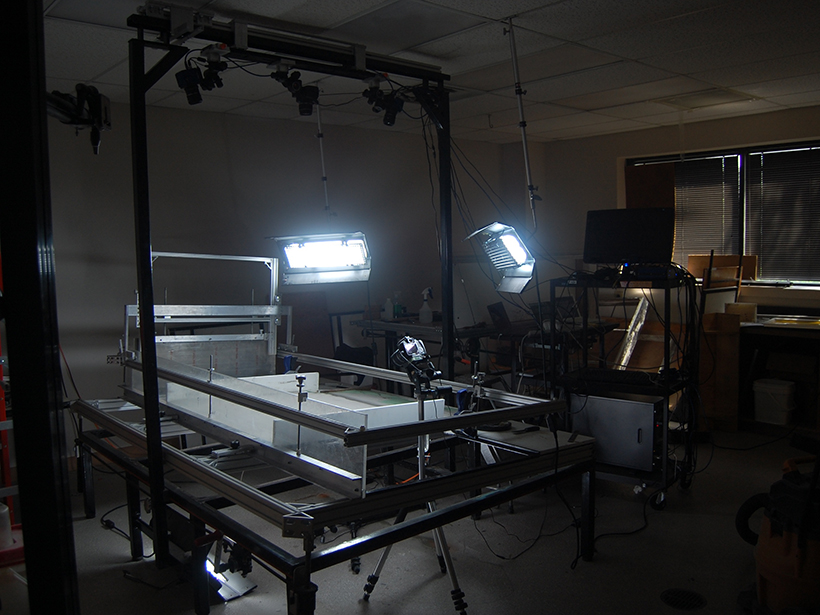Geoscientists face a multitude of difficulties when they study tectonic processes, but scale is probably the biggest. Tectonic processes are not just large on a spatial scale—they also take place over long periods of time. Using models is a very effective way of understanding some of the processes governing tectonic deformation at timescales that humans can comprehend.
Analog models—physical representations of tectonic processes—contribute substantially to the development of new structural and tectonic concepts, improved benchmarking of numerical models, and interactive teaching methods, but the U.S. analog modeling community is dispersed and small. Thus, 50 analog and numerical modelers gathered for a workshop at the Bureau of Economic Geology of the University of Texas at Austin to discuss new techniques, boundary conditions, new materials, and ways to strengthen the analog modeling community.
Making Better Models Together
Analog models are intuitive, and they have been used for more than 200 years. In 1815, Sir James Hall was the first to publish a research paper on a “tectonic” experiment where he shortened different layers of sand and clay to study the evolving structures. However, constructing a useful model is no simple task: It requires suitably scaling experiments so the results can be extrapolated to natural systems, and it requires the modeler to understand the necessary simplifications.

Workshop participants presented exciting innovations in analog modeling research, highlighting new modeling materials used in scientific research as well as teaching. These materials will eventually become accessible to the wider community via Carleton College’s Science Education Resource Center web page to help encourage the use of authentic, research-worthy analog models in the teaching communities.
A primary goal of this workshop was to strengthen the interaction and collaboration between physical and numerical modelers. Even though the two communities face similar challenges, the exchange between them has traditionally been limited.
During the workshop, participants created analog and numerical models of an extensional rift system. Participants discussed the strengths and limitations of both approaches, as well as ways to increase collaboration between the two groups. This hands-on approach during the workshop encouraged participants to exchange ideas directly, and it facilitated networking between the different communities.

In addition to 22 posters and two teaching examples, the workshop included 10 oral presentations on such topics as the application of model results to field and seismic data, different experimental techniques (e.g., centrifuge models versus 1g models), and scaling and reproducibility issues. Workshop attendees constituted a diverse group, ranging from early- to late-career geoscientists.
Future Plans
A discussion on future needs of the community at the end of the workshop led to two insights. Educators need a better system to exchange teaching materials for using analog models in classrooms. For example, they need dedicated ways to share information on how to build models and plan experiments, as well as actual model-building materials. Also, the community has an ongoing need for a system or database to store and exchange model results, as well as a database of various materials that are suitable for building models.
This workshop was sponsored by U.S. National Science Foundation grant 1700033.
—Jacqueline E. Reber (email: [email protected]), Department of Geological and Atmospheric Sciences, Iowa State University, Ames; Tim P. Dooley (@timdooley), Bureau of Economic Geology, University of Texas at Austin; and Elizabeth Logan, Institute for Computational Engineering and Sciences, University of Texas at Austin
Citation:
Reber, J. E.,Dooley, T. P., and Logan, E. (2017), Analog modeling recreates millions of years in a few hours, Eos, 98, https://doi.org/10.1029/2017EO085753. Published on 09 November 2017.
Text © 2017. The authors. CC BY 3.0
Except where otherwise noted, images are subject to copyright. Any reuse without express permission from the copyright owner is prohibited.

